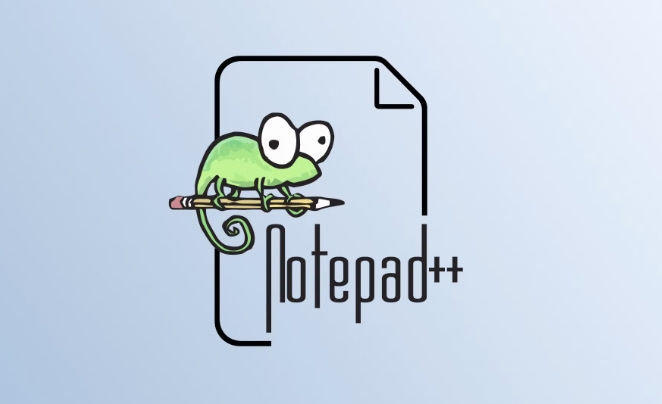Install a C compiler like MinGW-w64 and add its bin directory to the system PATH to enable command-line compilation. 2. Write and save your C code in Notepad with a .cpp extension. 3. Use the NppExec plugin to create a script that saves the file, changes to the current directory, compiles the code using g , and runs the resulting executable if compilation succeeds. 4. Optionally, assign a shortcut key to the script for quick execution. This setup allows Notepad to function as a lightweight C development environment by leveraging external tools, with the NppExec console displaying output and supporting basic input, making it suitable for small projects when a full IDE is not needed.

Compiling and running C code in Notepad isn't built-in — Notepad is just a text editor. But you can turn it into a lightweight C coding environment by connecting it with a compiler (like MinGW or g ) and using its Run feature or NppExec plugin. Here's how to do it step by step.

1. Install a C Compiler (MinGW or MinGW-w64)
You need a compiler to turn your .cpp code into an executable.
-
Download MinGW-w64 (recommended):
Go to http://ipnx.cn/link/11110cf64018697137cadb77b6aee9f8 or use a pre-compiled build from http://ipnx.cn/link/04e35ab54388b691735c8b4231d387a1 (easy setup).
Extract and install it (e.g., to
C:\mingw64).-
Add the
binfolder to your system PATH:
- Example:
C:\mingw64\bin - Press
Win S, type "Environment Variables", and edit "Path" under System Variables. - Add the path to the
binfolder. - Open Command Prompt and type
g --versionto verify it works.
- Example:
2. Write C Code in Notepad
- Open Notepad .
- Create a new file and write a simple C program:
#include <iostream>
using namespace std;
int main() {
cout << "Hello, World!" << endl;
return 0;
}- Save it as
hello.cppon your desktop or a folder of your choice.
3. Compile and Run Using NppExec (Recommended Method)
NppExec is a plugin that lets you run external commands from Notepad .
Install NppExec:
- In Notepad , go to Plugins > Plugins Admin.
- Search for NppExec, check it, and click Install.
- Restart Notepad if prompted.
Set up a script to compile and run C :
- Go to Plugins > NppExec > Execute... (or press
F6). - Paste this script:
NPP_SAVE
cd $(CURRENT_DIRECTORY)
g "$(FILE_NAME)" -o "$(NAME_PART).exe"
if $(EXITCODE) == 0 (
"$(NAME_PART).exe"
)-
Explanation:
-
NPP_SAVE: Saves your file before compiling. -
cd $(CURRENT_DIRECTORY): Switches to your file’s folder. -
gcompiles the.cppfile into an.exe. - If compilation succeeds (
exit code 0), it runs the program.
-
Click Save... and name it (e.g., "Compile and Run C ").
Now you can run it with
F6or assign a shortcut later.
4. Optional: Assign a Shortcut Key
To run your script quickly:
- Go to Plugins > NppExec > Advanced Options.
- Under "Menu item", select your saved script ("Compile and Run C ").
- Click Add/Modify, then close.
- Go to Settings > Shortcut Mapper > Plugin Commands.
- Find your script and assign a key (e.g.,
F5orCtrl F5).
Now press that key to compile and run instantly.
Notes and Tips
- Output window: The program output appears in the NppExec console at the bottom of Notepad .
-
Input during runtime: The NppExec console supports basic input, but it’s limited. For programs needing user input, consider running
.exemanually in CMD. -
Errors: If you see
'g ' is not recognized, your PATH isn’t set correctly. -
Clean up: Add
del "$(NAME_PART).exe"at the end if you want to delete the.exeafter running.
Basically, Notepad becomes a C playground when paired with g and NppExec. It's not a full IDE like Code::Blocks or VS Code, but it's fast and lightweight for small projects. Just make sure your compiler is installed and in PATH — everything else is just automation.
The above is the detailed content of How to compile and run C in Notepad. For more information, please follow other related articles on the PHP Chinese website!

Hot AI Tools

Undress AI Tool
Undress images for free

Undresser.AI Undress
AI-powered app for creating realistic nude photos

AI Clothes Remover
Online AI tool for removing clothes from photos.

Clothoff.io
AI clothes remover

Video Face Swap
Swap faces in any video effortlessly with our completely free AI face swap tool!

Hot Article

Hot Tools

Notepad++7.3.1
Easy-to-use and free code editor

SublimeText3 Chinese version
Chinese version, very easy to use

Zend Studio 13.0.1
Powerful PHP integrated development environment

Dreamweaver CS6
Visual web development tools

SublimeText3 Mac version
God-level code editing software (SublimeText3)

Hot Topics
 What is high-frequency virtual currency trading? The principles and technical implementation points of high-frequency trading
Jul 23, 2025 pm 11:57 PM
What is high-frequency virtual currency trading? The principles and technical implementation points of high-frequency trading
Jul 23, 2025 pm 11:57 PM
High-frequency trading is one of the most technologically-rich and capital-intensive areas in the virtual currency market. It is a competition about speed, algorithms and cutting-edge technology that ordinary market participants are hard to get involved. Understanding how it works will help us to have a deeper understanding of the complexity and specialization of the current digital asset market. For most people, it is more important to recognize and understand this phenomenon than to try it yourself.
 Explain RAII in C
Jul 22, 2025 am 03:27 AM
Explain RAII in C
Jul 22, 2025 am 03:27 AM
RAII is an important technology used in resource management in C. Its core lies in automatically managing resources through the object life cycle. Its core idea is: resources are acquired at construction time and released at destruction, thereby avoiding leakage problems caused by manual release. For example, when there is no RAII, the file operation requires manually calling fclose. If there is an error in the middle or return in advance, you may forget to close the file; and after using RAII, such as the FileHandle class encapsulates the file operation, the destructor will be automatically called after leaving the scope to release the resource. 1.RAII is used in lock management (such as std::lock_guard), 2. Memory management (such as std::unique_ptr), 3. Database and network connection management, etc.
 C vector get first element
Jul 25, 2025 am 12:35 AM
C vector get first element
Jul 25, 2025 am 12:35 AM
There are four common methods to obtain the first element of std::vector: 1. Use the front() method to ensure that the vector is not empty, has clear semantics and is recommended for daily use; 2. Use the subscript [0], and it also needs to be judged empty, with the performance comparable to front() but slightly weaker semantics; 3. Use *begin(), which is suitable for generic programming and STL algorithms; 4. Use at(0), without manually null judgment, but low performance, and throw exceptions when crossing the boundary, which is suitable for debugging or exception handling; the best practice is to call empty() first to check whether it is empty, and then use the front() method to obtain the first element to avoid undefined behavior.
 How to develop AI-based text summary with PHP Quick Refining Technology
Jul 25, 2025 pm 05:57 PM
How to develop AI-based text summary with PHP Quick Refining Technology
Jul 25, 2025 pm 05:57 PM
The core of PHP's development of AI text summary is to call external AI service APIs (such as OpenAI, HuggingFace) as a coordinator to realize text preprocessing, API requests, response analysis and result display; 2. The limitation is that the computing performance is weak and the AI ecosystem is weak. The response strategy is to leverage APIs, service decoupling and asynchronous processing; 3. Model selection needs to weigh summary quality, cost, delay, concurrency, data privacy, and abstract models such as GPT or BART/T5 are recommended; 4. Performance optimization includes cache, asynchronous queues, batch processing and nearby area selection. Error processing needs to cover current limit retry, network timeout, key security, input verification and logging to ensure the stable and efficient operation of the system.
 C bit manipulation example
Jul 25, 2025 am 02:33 AM
C bit manipulation example
Jul 25, 2025 am 02:33 AM
Bit operation can efficiently implement the underlying operation of integers, 1. Check whether the i-th bit is 1: Use n&(1
 C function example
Jul 27, 2025 am 01:21 AM
C function example
Jul 27, 2025 am 01:21 AM
Functions are the basic unit of organizing code in C, used to realize code reuse and modularization; 1. Functions are created through declarations and definitions, such as intadd(inta,intb) returns the sum of the two numbers; 2. Pass parameters when calling the function, and return the result of the corresponding type after the function is executed; 3. The function without return value uses void as the return type, such as voidgreet(stringname) for outputting greeting information; 4. Using functions can improve code readability, avoid duplication and facilitate maintenance, which is the basic concept of C programming.
 Understanding the C ABI
Jul 24, 2025 am 01:23 AM
Understanding the C ABI
Jul 24, 2025 am 01:23 AM
C ABI is the underlying rule that the compiler follows when generating binary code, which determines mechanisms such as function calls, object layout, name adaptation, etc. 1. It ensures that different compilation units interact correctly, 2. Different compilers or versions may adopt different ABIs, affecting dynamic library links, STL transfers, virtual function calls, etc. 3. Cross-platform development, long-term system maintenance, third-party library use and other scenarios need to pay special attention to ABI consistency, 4. ABI can be controlled through macro definitions and compilation options, and use tools to view the symbol table to judge consistency.
 C std::is_same example
Jul 24, 2025 am 03:22 AM
C std::is_same example
Jul 24, 2025 am 03:22 AM
std::is_same is used to determine whether the two types are exactly the same at compile time and return a bool value. 1. In the basic usage, std::is_same::value is true when T and U are exactly the same, otherwise it is false. Different modifiers such as const, reference, pointer, etc. will cause false; 2. You can remove the type modification with std::remove_const, std::remove_reference and other types, and then compare it to achieve more flexible type judgment; 3. It is often used in template metaprogramming in practical applications, such as conditional compilation with ifconstexpr, and perform different logic according to different types; 4.








